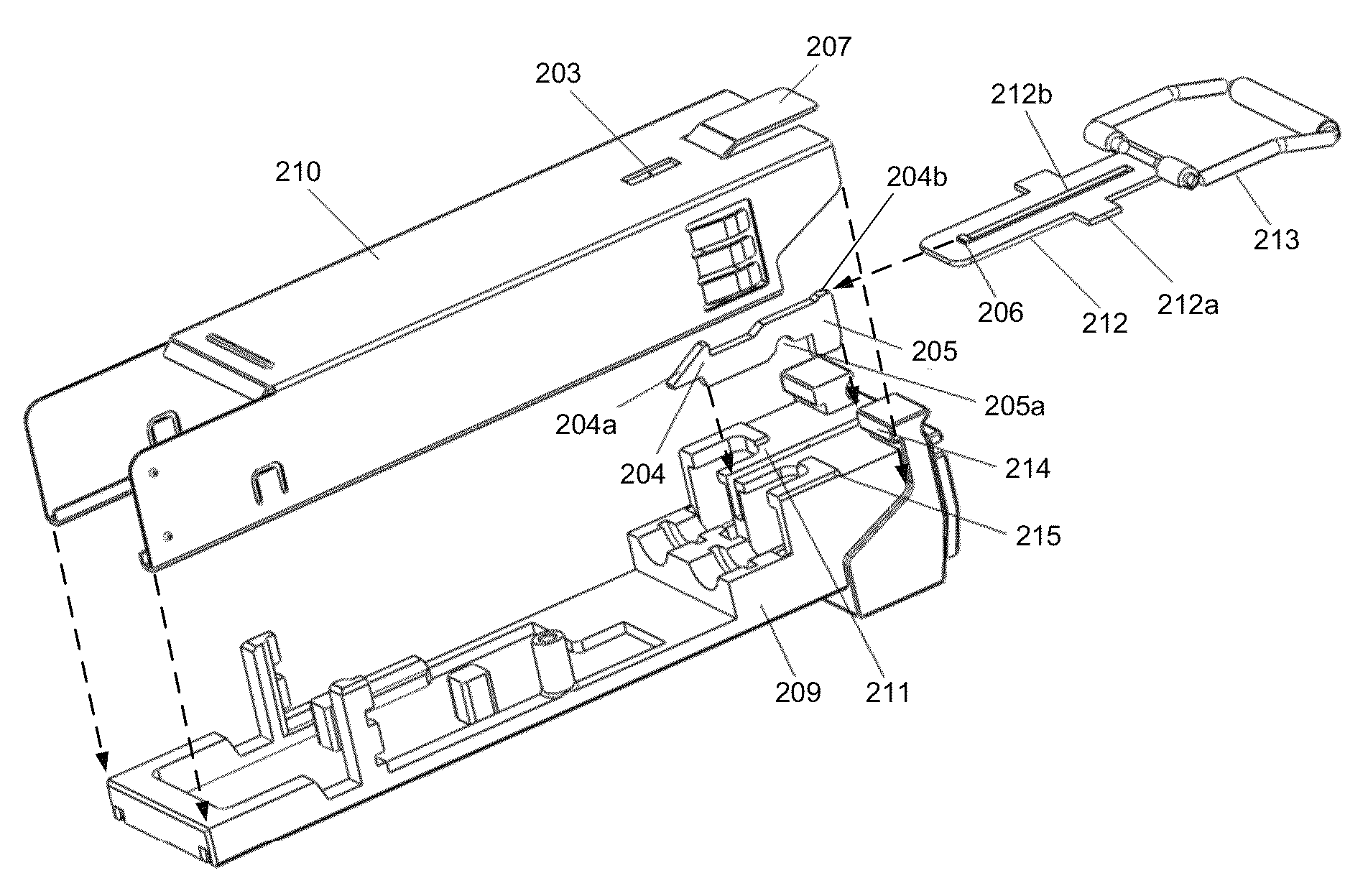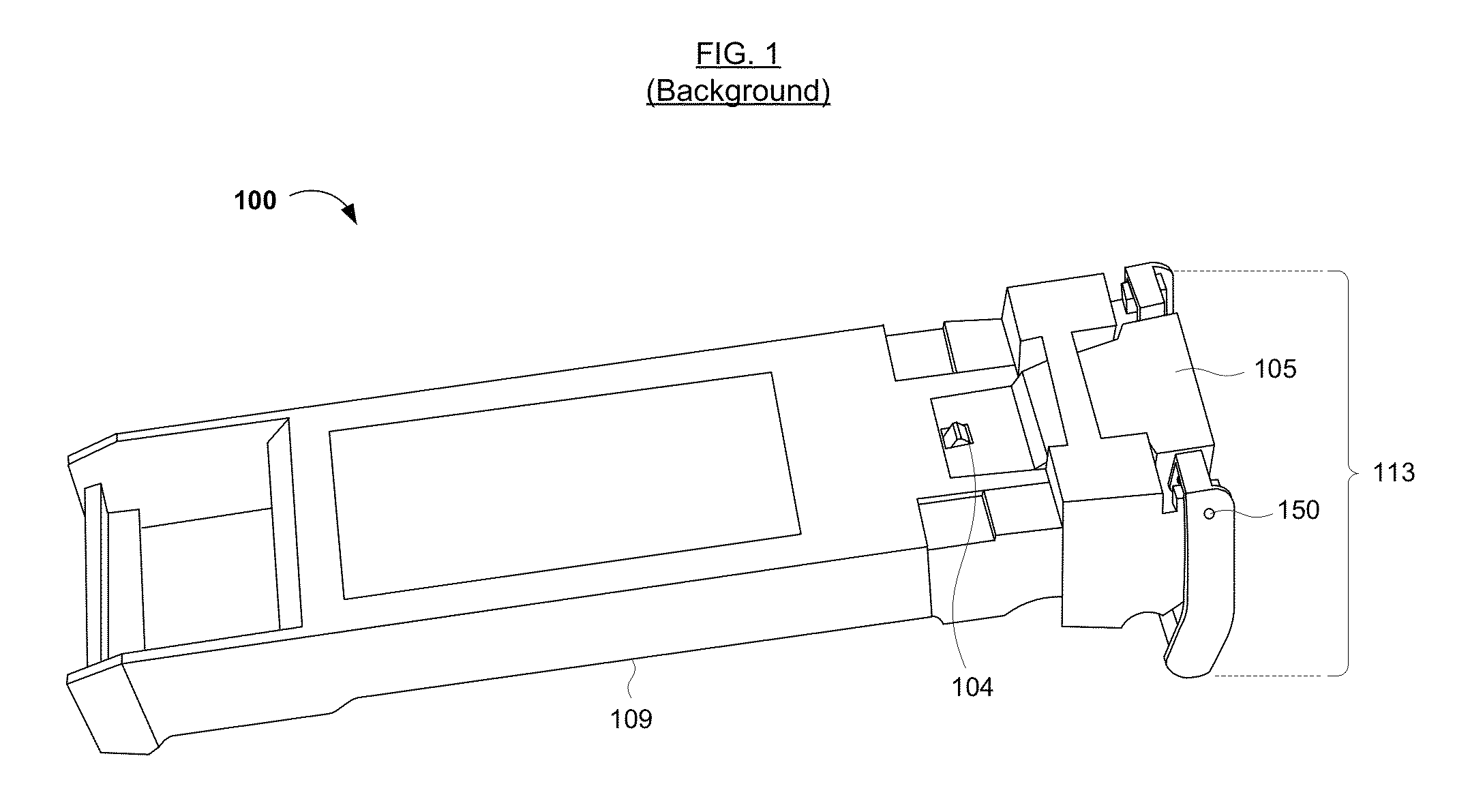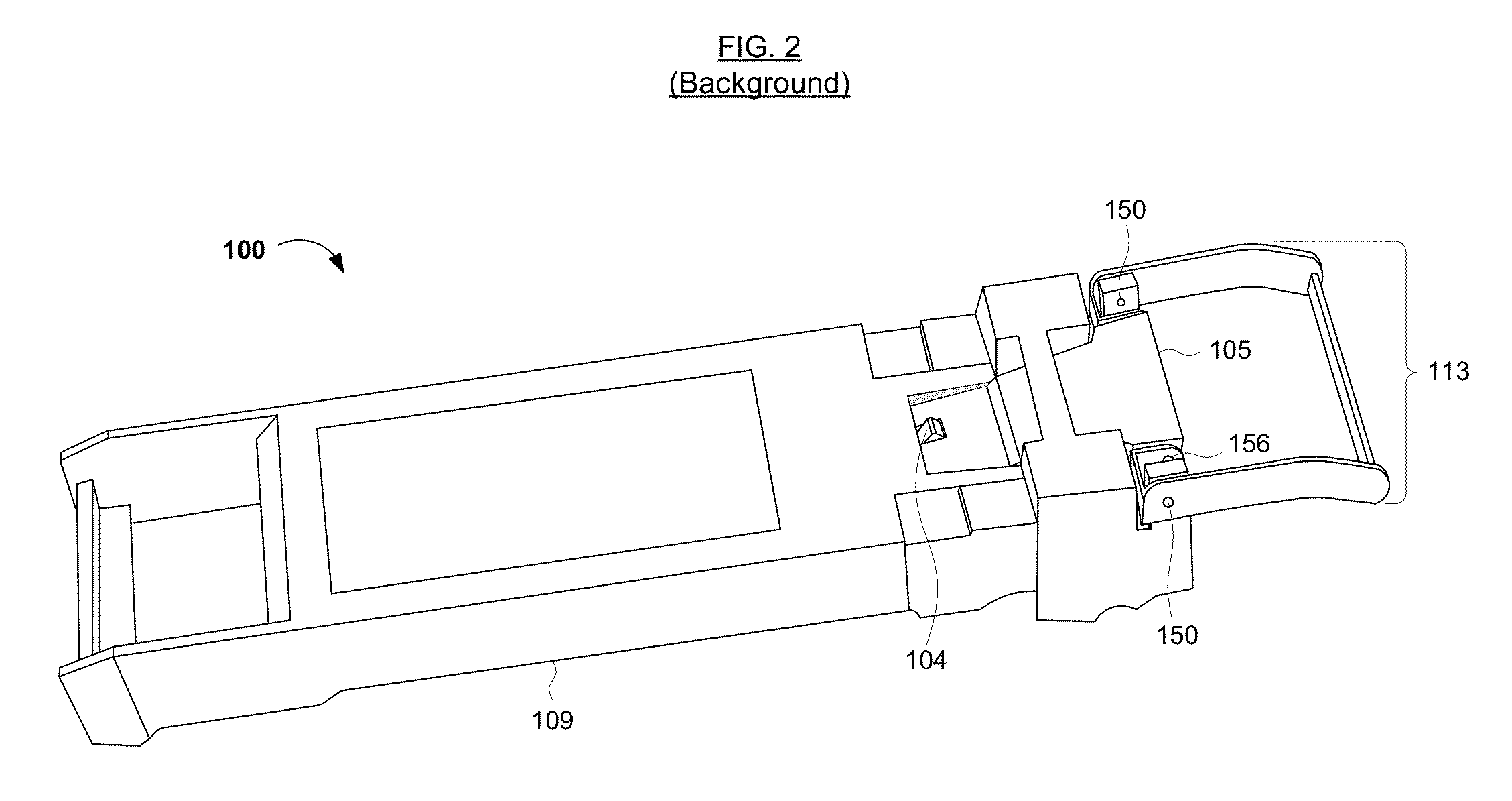Latchable module housings and methods of making and using the same
a technology of latching module and housing, which is applied in the field of optical modules, can solve the problems of affecting the deployment and installation of the module, and affecting the stability of the housing and/or its locking mechanism, so as to achieve the effect of reducing the chance of damage to the housing and/or the locking mechanism and minimal force inserted and removed
- Summary
- Abstract
- Description
- Claims
- Application Information
AI Technical Summary
Benefits of technology
Problems solved by technology
Method used
Image
Examples
first embodiment
[0089]In the first embodiment, the handle 313 is rotatably attached to the chassis 309 and comprises arms 313a, a grasping bar (see, e.g., 313b in FIG. 13) and a shaft 330. However, in other embodiments, the handle 313 may be hingedly attached to the chassis 309. In some embodiments the arms 313a, the grasping bar 313b and the shaft 330 may be cast and / or formed as a single piece. In other embodiments, the arms 313a, the grasping bar 313b and the shaft 330 may comprise two or more pieces, fixedly attached to each other (e.g., by screwing, pinning, pressing, crimping, etc.). In some embodiments the arms 313a, the grasping bar 313b and the shaft 330 may be formed from the same material or materials (e.g., when the arms 313a, the grasping bar 313b and the shaft 330 are cast and / or formed as a single piece). In embodiments where the arms 313a, the grasping bar 313b and the shaft 330 comprise two or more pieces, the arms 313a, the grasping bar 313b and the shaft 330 may be formed from di...
second embodiment
[0105]Referring now to FIGS. 18-21, a third exemplary module housing 500 is shown. Referring initially to FIG. 18 (which shows the module housing 500 with its exterior casing removed for clarity), the module housing 500 comprises (i) a chassis 509, (ii) two pivots 508, (iii) a handle 573 having arms 574a, grasping bar 574b and upper bars 574c, and (iv) a latch / slider 505 located between the two pivots 508 and having a projection 504 and first through third slider pins 416-418. In FIG. 18, the handle 573 is shown in the lowered position, and the latch / slider 505 and the projection 504 in the locked position. Similar to FIG. 12, the latch / slider 505 is configured to move with respect to the chassis 509. However, the third exemplary module housing 500 of FIG. 18 differs from the second exemplary module housing 300 of FIG. 12 in that (i) the module housing 500 comprises two pivots 508 (one on either side of the latch / slider 505, (ii) the latch / slider may comprise a single unitary body (...
PUM
| Property | Measurement | Unit |
|---|---|---|
| angle | aaaaa | aaaaa |
| angle | aaaaa | aaaaa |
| angle | aaaaa | aaaaa |
Abstract
Description
Claims
Application Information
 Login to View More
Login to View More - R&D
- Intellectual Property
- Life Sciences
- Materials
- Tech Scout
- Unparalleled Data Quality
- Higher Quality Content
- 60% Fewer Hallucinations
Browse by: Latest US Patents, China's latest patents, Technical Efficacy Thesaurus, Application Domain, Technology Topic, Popular Technical Reports.
© 2025 PatSnap. All rights reserved.Legal|Privacy policy|Modern Slavery Act Transparency Statement|Sitemap|About US| Contact US: help@patsnap.com



